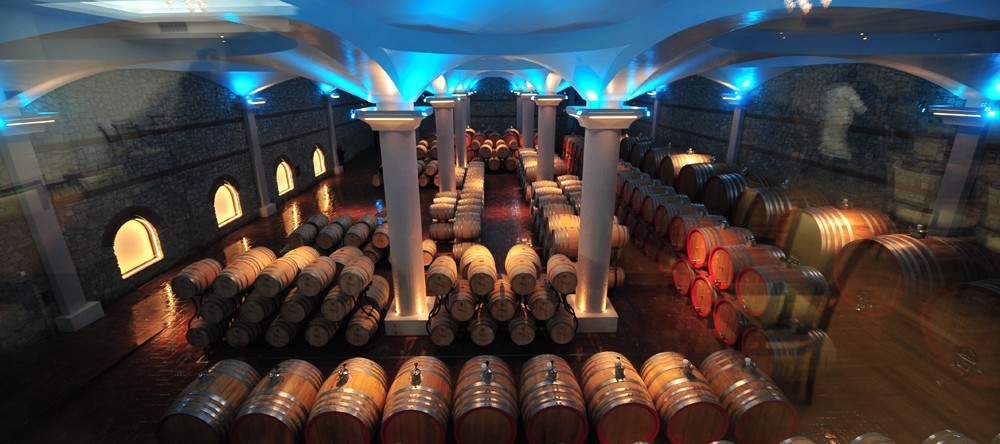Barrel Aging Wines at Stobi
Posted on Mon 13th Jul 2015 at 15:20

The Stobi Winey has a rich history of wine making and an impressive barrique room where many of their fine wines are aged in oak Barrels.
Wine maker for Stobi, Dane Jovanov, explains the barrel aging techniques used at the Macedonian Winery. Not all of the wines are suitable for barrel aging, especially white wines with a lower percentage of alcohol, in addition to wines where you want to preserve the freshness and the fruity character of the wine. Traditionally, great red wines are aged in oak barrels from the end of fermentation until bottling. However, also in red winemaking, not all of the wines are suitable for barrel aging. In order for the reds to be suitable for barrel aging it must be well extracted, full bodied and to have the potential for aging in oak. The phenol composition of wine is considerably modified by barrel aging, thanks to controlled oxidation. Colour is intensified due to reactions between tannins and anthocyanins, where the free anthocyanin concentration decreases and the tannin structure evolves, as does its reactivity to gelatin. After ten months of barrel aging, wines benefit from a better colour than those aged in vats; this colour remains more stable during bottle aging too. The flavour is also more attractive to the palate, characterised by softer and smoother tannins. Wine also acquires aromatic complexity as a result of the odoriferous substances extracted from wood. The oaky aroma must be carefully monitored, to ensure that it blends harmoniously with the wine’s overall structure. Even though producers and winemakers may wish to give their wines an oak character, this must not be overdone. It should never overpower the wine’s intrinsic qualities. The barrel’s contribution to aroma and flavour may be adjusted by modifying the proportion of wine aged in oak, especially new barrels. Other important factors are the type of oak and the way the barrels are made in terms of toasting (low, medium, medium+, high toasting) as well as the duration of barrel aging which is different for different type of wine. For the indigenous Stobi Vranec we like to use Slavonian Oak (eastern European oak) since is more reflecting the terroir of our vineyards and is more compatible with the genetic predisposition of the cultivar itself. Dane Jovanov, Stobi Winery 2014. For an in-depth look at the chemistry of oak and winemaking, read MW Caroline Gilby’s article here.

